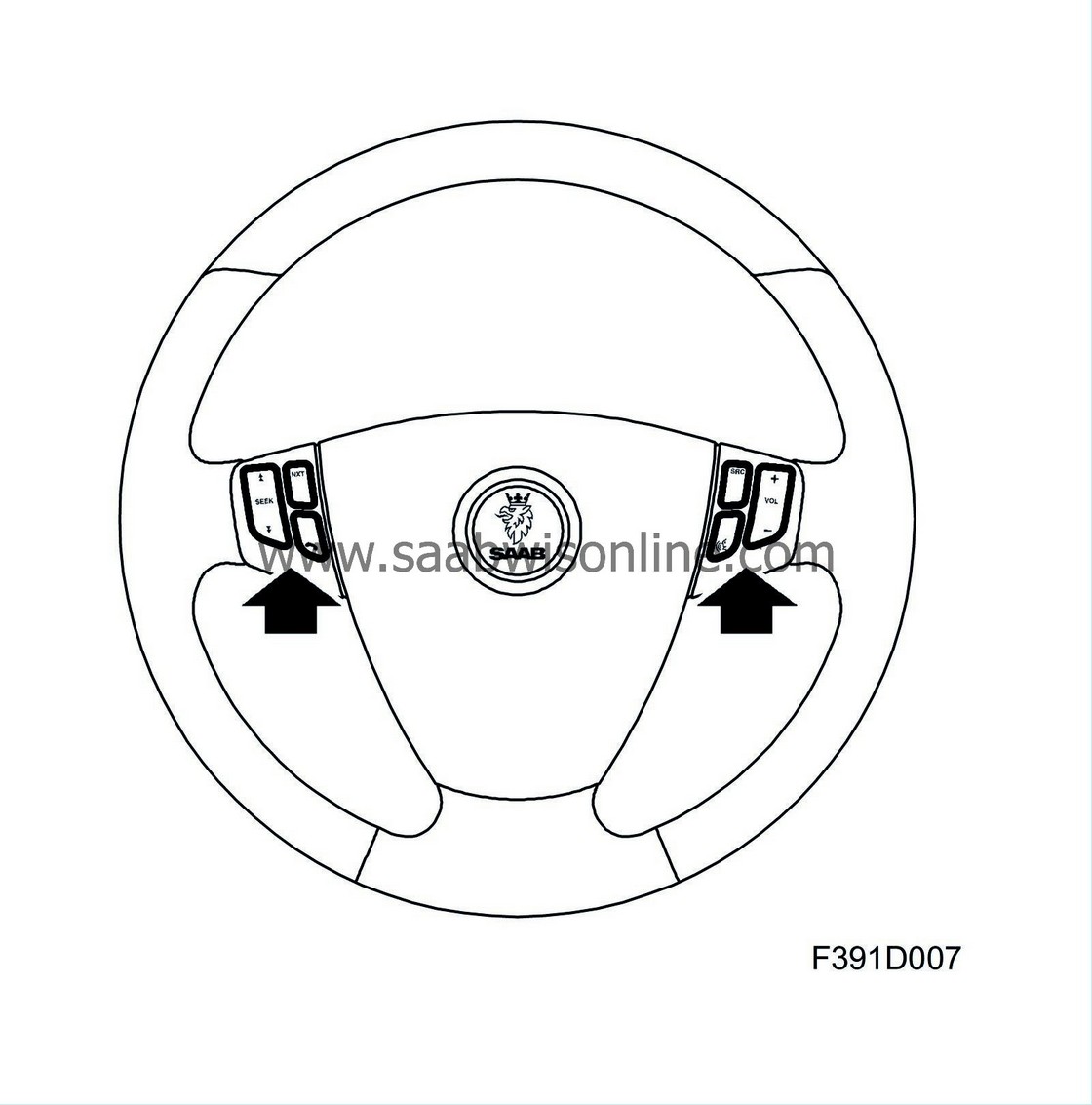Detailed description, Communication
| Detailed description, Communication |
| Tel 1 |
With option Tel 1 the vehicle is equipped with the Saab Audio or Saab Infotainment system. The system has provisions for an external mobile phone that can be connected via a connector to the cars wiring harness.


| • |
The system uses the roof antenna and an antenna cable is pre-routed.
|
|
| • |
A hands-free microphone is integrated in the front roof console.
|
|
| • |
The audio system is muted when the telephone is activated.
|
|
| • |
The audio system's loudspeakers produce the sound from the phone.
|
|
| • |
The mobile phone is charged automatically.
|
|
| • |
The sound volume of the call in progress can be adjusted using the controls on the steering wheel or with the audio system's volume dial.
|
|
| Tel 2 |
Tel 2 means that the car is equipped with Saab Infotainment, with an integrated telephone in the car. A communication module, housed under the parcel shelf, has a slot for a SIM card and connections to a microphone, roof antenna and radio. A telephone and screen for displaying selected telephone functions are integrated in the Saab Infotainment system.

Switches on the steering wheel can be used to make and answer telephone calls, adjust the volume or to search through, and select numbers from, the three conversation lists. Telephone conversations are effected via the roof panel microphone and the normal audio system loudspeakers. Tel 2 also has the option of voice control of the telephone, telephone book and the SMS message service.
The system will not function unless the SIM card is installed and the PIN code correctly registered. It is also necessary to be within an area covered by GSM (EU). Covering is indicated on the SID where the text TELE is shown when the cover is adequate and NO TELE is shown when the cover is insufficient.

The SID and infotainment control module display are used by the system. Call functions available using the steering wheel controls are generally displayed on the SID while call functions accessed via the control panel are generally displayed on the ICM display. Further information about these two displays can be found in the user manual.

An incoming call can be accepted by pressing the telephone symbol button on the steering wheel or on the control panel or by selecting from the menu on the control panel display. The telephone number of the caller is shown on the SID whilst incoming SMS messages are shown on the control panel display.

To make a call, dial the number using the ICM keypad or use the steering wheel controls. You can dial any number and send text messages using the control panel. You can only dial a number from one of the call lists (dialled, missed, received) using the steering wheel controls.
The push-to-talk steering wheel control allows you to create voice tags in the phone book. Using these tags, you can call numbers in the phone book by simply pressing the push-to-talk button and then saying the name of the person you wish to call. The system will repeat the name and then dial the number. This is very useful since the driver does not need to let go of the wheel, improving traffic safety. Further information about voice activation is provided in the user manual.

The entertainment head unit and communication unit communicate over the O-bus.
The communication unit has a flash memory, which means that additional features can be SPS programmed at a later date.
| OnStar |
With the OnStar option the vehicle is equipped with a communication unit and an OnStar button which is used to summons help and to request assistance with respect to various services. In order to contact OnStar it is only necessary to press the OnStar button which is mounted either under the audio control panel or under the infotainment control panel, depending upon which system is fitted. The system will only function if the vehicle is within an area covered by AMPS (US).

When you activate the system, i.e. press the OnStar button, you will be put in touch with an advisor and can receive advice or help.
The system comprises a communication unit with GPS unit, GPS antenna, OnStar button, microphone and phone antenna. The GPS and phone antennae are integrated in the same unit and positioned on the roof of the car. The system uses the entertainment head unit to reproduce the voice advisor.

The system automatically contacts an alarm centre in the event of a collision that deploys the airbags. The position of the car is determined using GPS, assisting emergency services to quickly reach the location.
The communication unit, radio and control panel communicate with each other via the O-bus.
The communication unit has a flash memory, which means that additional features can be SPS programmed at a later date.


